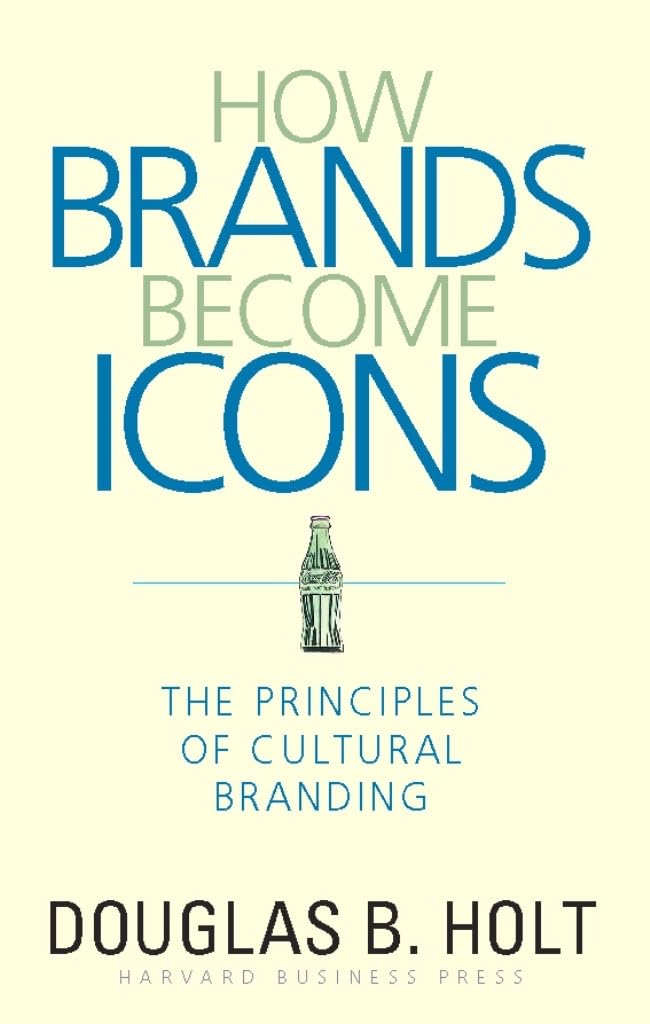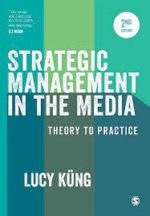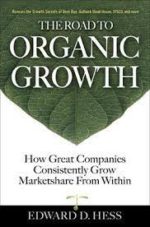Coca-Cola. Harley-Davidson. Nike. Budweiser. Valued by customers more for what they symbolize than for what they do, products like these are more than brands–they are cultural icons. How do managers create brands that resonate so powerfully with consumers? Based on extensive historical analyses of some of America’s most successful iconic brands, including ESPN, Mountain Dew, Volkswagen, Budweiser, and Harley-Davidson, this book presents the first systematic model to explain how brands become icons. Douglas B. Holt shows how iconic brands create “identity myths” that, through powerful symbolism, soothe collective anxieties resulting from acute social change. Holt warns that icons can’t be built through conventional branding strategies, which focus on benefits, brand personalities, and emotional relationships. Instead, he calls for a deeper cultural perspective on traditional marketing themes like targeting, positioning, brand equity, and brand loyalty–and outlines a distinctive set of “cultural branding” principles that will radically alter how companies approach everything from marketing strategy to market research to hiring and training managers. Until now, Holt shows, even the most successful iconic brands have emerged more by intuition and serendipity than by design. With How Brands Become Icons, managers can leverage the principles behind some of the most successful brands of the last half-century to build their own iconic brands. Douglas B. Holt is associate professor of Marketing at Harvard Business School.
How Brands Become Icons: The Principles of Cultural Branding
KSh 2,795.00
Coca-Cola. Harley-Davidson. Nike. Budweiser. Valued by customers more for what they symbolize than for what they do, products like these are more than brands–they are cultural icons. How do managers create brands that resonate so powerfully with consumers? Based on extensive historical analyses of some of America’s most successful iconic brands, including ESPN, Mountain Dew, Volkswagen, Budweiser, and Harley-Davidson, this book presents the first systematic model to explain how brands become icons. Douglas B. Holt shows how iconic brands create “identity myths” that, through powerful symbolism, soothe collective anxieties resulting from acute social change. Holt warns that icons can’t be built through conventional branding strategies, which focus on benefits, brand personalities, and emotional relationships. Instead, he calls for a deeper cultural perspective on traditional marketing themes like targeting, positioning, brand equity, and brand loyalty–and outlines a distinctive set of “cultural branding” principles that will radically alter how companies approach everything from marketing strategy to market research to hiring and training managers. Until now, Holt shows, even the most successful iconic brands have emerged more by intuition and serendipity than by design. With How Brands Become Icons, managers can leverage the principles behind some of the most successful brands of the last half-century to build their own iconic brands. Douglas B. Holt is associate professor of Marketing at Harvard Business School.
1 in stock
Related products
-
Alignment: Using the Balanced Scorecard to Create Corporate Synergies Hardcover
KSh 1,995.00Most organizations consist of multiple business and support units, each populated by highly trained, experienced executives. But often the efforts of individual units are not coordinated, resulting in conflicts, lost opportunities, and diminished performance.
Robert S. Kaplan and David P. Norton argue that the responsibility for this critical alignment lies with corporate headquarters. In this book, the authors apply their revolutionary Balanced Scorecard management system to corporate-level strategy, revealing how highly successful enterprises achieve powerful synergies by explicitly defining corporate headquarters’ role in setting, coordinating, and overseeing organizational strategy.
Based on extensive field research in organizations worldwide, Alignment shows how companies can build an enterprise-level Strategy Map and Balanced Scorecard that clearly articulate the “enterprise value proposition”: how the enterprise creates value above that achieved by individual business units operating alone. The book provides case studies, actionable frameworks, and sample scorecards that show how to align business and support units, boards of directors, and external partners with the corporate strategy and create a governance process that will ensure that alignment is sustained.
The next breakthrough in strategy execution from the field’s premier thinkers, Alignment shows how today’s companies can unlock unrealized value from enterprise synergies.
-
Get Hired Fast! Tap the Hidden Job Market in 15 Days Paperback
KSh 995.00You lost your job six months ago. You’ve emailed 90 resumes. You’ve scoured the job boards and the help wanted ads. You’ve called recruiters, old bosses, former coworkers…but nothing. You’re scared. You’re beginning to think there are no jobs out there. But there ARE jobs. And you can get one of them–if you’re willing to try the job search technique that most people are too timid to try.
If you’re one of 9 million Americans looking for a job, you don’t want to go 12 to 24 months without a job offer (as many do). The trick is to tap into the hidden job market–where 90 percent of the jobs really are!
Get Hired FAST! shows you how to use a direct-calling strategy that will generate at least three interviews in three weeks. It gives you a 15-day Action Plan, complete with charts, scripts, and other tools that will enable you to use the direct-calling technique like a professional.
This no-holds-barred book also includes insider advice on how to ace the interview once your calling strategy pays off, negotiate the best offer, and keep the job once you get it.
Get Hired FAST! shows you where and how to identify key contacts in target companies, how to uncover crucial data about target companies, how to script calls to hiring managers in advance–and handle any scenario, from voicemail to conversations with contacts’ staffers.
-
Strategic Management in the Media: Theory to Practice
KSh 7,560.00′Küng’s book stands out for its focus on concepts, drivers, and dynamics. Its scope and learning are brilliant and dazzling. This updated edition will be a source of insight for students and a tool for industry veterans who seek the perspective of academia.′
– Eli Noam, Columbia Business School′A landmark contribution to scholarship, Küng’s excellent book provides an empirically rich and analytically sharp-sighted guide to contemporary organizational strategies in a complex and dynamic media environment.′
– Gillian Doyle, University of Glasgow′In the age of relentless technological disruption, unlimited distribution and non-professionalization, media firms are more dependent than ever on strategic management. Küng articulates the dimensions of media industries to account for an ever-increasing array of challenges and strategies.′
– David Craig, University of Southern CaliforniaIn this Second Edition of a book many found invaluable for research and teaching, including myself, Küng accomplishes a challenging task: to preserve all the best qualities of the First Edition while both extending the scope and deepening understandings about strategic management theory in application to media industries.′
– Gregory Ferrell Lowe, University of TampereWith the media industries facing unprecedented change and challenge from top to bottom, it has never been more vital to understand the elements of strategy and how they apply to media organizations.
This new edition:
- Shows innovation, disruption and strategic adaptation in action, with a stronger focus on a case-based approach
- Takes readers deep into case studies on BuzzFeed, The Guardian, Netflix, the New York Times and the BBC
- Explains strategic theory and concepts with insight and clarity
- Shows how to understand change and decision-making within media organizations.
This is the essential guide to change and management in the media industries – ideal for students of media studies, media economics and media management.
-
The Road to Organic Growth: How Great Companies Consistently Grow Marketshare from Within Hardcover – January 3, 2007
KSh 1,995.00A rigorous two-year study of the top 800 value-creating public companies found that growth generated internally through a commitment to customer satisfaction, employee engagement, and profitability resulted in consistent employee retention, stock value improvements, and better returns on investment.
In The Road to Organic Growth, Edward Hess shares the full results of his breakthrough study, providing fresh, and often-surprising perspectives on what it really takes to foster organic growth. Using instructive examples from leading companies such as SYSCO, Best Buy,Tiffany & Company, Outback Steakhouse, and Stryker Corporation, Hess reveals the strategies these trailblazers used to achieve long-term growth from within.
Drawing upon original research, interviews, and in-depth corporate studies, Hess identifies the six keys to achieving organic growth and-most important-explains how to seamlessly and consistently incorporate them into a formula for sustainability and competitive advantage to
- Develop a simple, easy-to-understand business model and growth strategy
- Be entrepreneurial at the point of customer contact
- Measure everything-from finances to operations to behaviors
- Build an engaged, loyal, and multi-talented people pipeline
- Find humble, internally-focused operators to lead your company
- Be an execution and technology champion
The Road to Organic Growth proves that you can build a sustainable, successful business without the expense of acquisitions, financial manipulations, or devaluing your employees. By exceeding customer expectations, building an employee-centric organization, and focusing intensely on measurement and performance, your company will achieve consistent, solid growth from within.
-
Strategic Management
KSh 1,295.00This comprehensive text provides fundamental and broad knowledge about strategic management and policy. It offers a thorough, state-of-the-art treatment of the critical business skills that are required to plan and manage strategic activities and business policies in todays corporate world. It introduces the readers to the various tools and techniques being used by the firms competing in the national, as well as in the global economy. The book has been enriched with examples and brief descriptions given as Strategic Memo in each chapter. The case studies given at the end of the book can be used to teach and discuss a comprehensive
-
The 30 Day MBA in Marketing: Your Fast Track Guide to Business Success
KSh 1,795.00The 30 Day MBA in Marketing provides a complete marketing ‘course’ spanning twelve disciplinary areas, and including such hot topics as Buyer behaviour, Marketing strategy, Promotion and advertising, Pricing, Managing the marketing organization and Marketing and the law. Each chapter includes at least one practical real life example to illustrate how marketing concepts apply to business decision making. Learn what they teach you on professional marketing courses and at the world’s top Business Schools and why it matters to you; eliminate gaps in your marketing knowledge and take part in business decision making on an equal footing with MBA graduates or your company marketing director. This book includes detailed information on how to find and analyse market data on any business or market anywhere and online appendices that provide an invaluable guide to finding further information and free resources on each topic covered.
-
Sales Essentials: All You Need to Know to Be a Successful Salesperson-From Cold Calling and Prospecting with E-Mail to Increasing the Buy and Closing – Softcover11
KSh 1,195.00Having trouble closing your deals? Hitting a frustrating plateau with your sales numbers? Feel that upselling is a lost cause? Let sales guru Stephan Schiffman drive your sales pitches up a notch with his tried-and-true techniques – and get results immediately! Stephan Schiffman’s Sales Essentials includes time-tested tips on: Mastering the cold call Using email as a selling tool Raising the stakes to “up” your next buy Closing the deal – every time! Plus, you’ll also find 50 surefire questions to ask to make deal after deal, year after year. Packed with insider information you need to beat the competition, you can’t afford not to read Stephan Schiffman’s Sales Essentials!
-
Operational Risk Management Paperback
KSh 1,295.00Operational Risk is one of the important arms of the risk management triangle, the other two being Credit Risk and Market (Treasury) Risk. Any organisation, particularly in the banking sector, is squarely exposed to operational risks emanating within or outside the organisation.There was no precise definition of operational risk until Basel Accord II came into being in June 2004. For the first time in the history of global banking, operational risk capital charge has been made a mandatory requirement in banking. This certainly puts in a lot of stress and strain on a bank’s management. The entire gamut of operational risk has been visited and covered in the appropriate chapters of this book.










Be the first to review “How Brands Become Icons: The Principles of Cultural Branding”